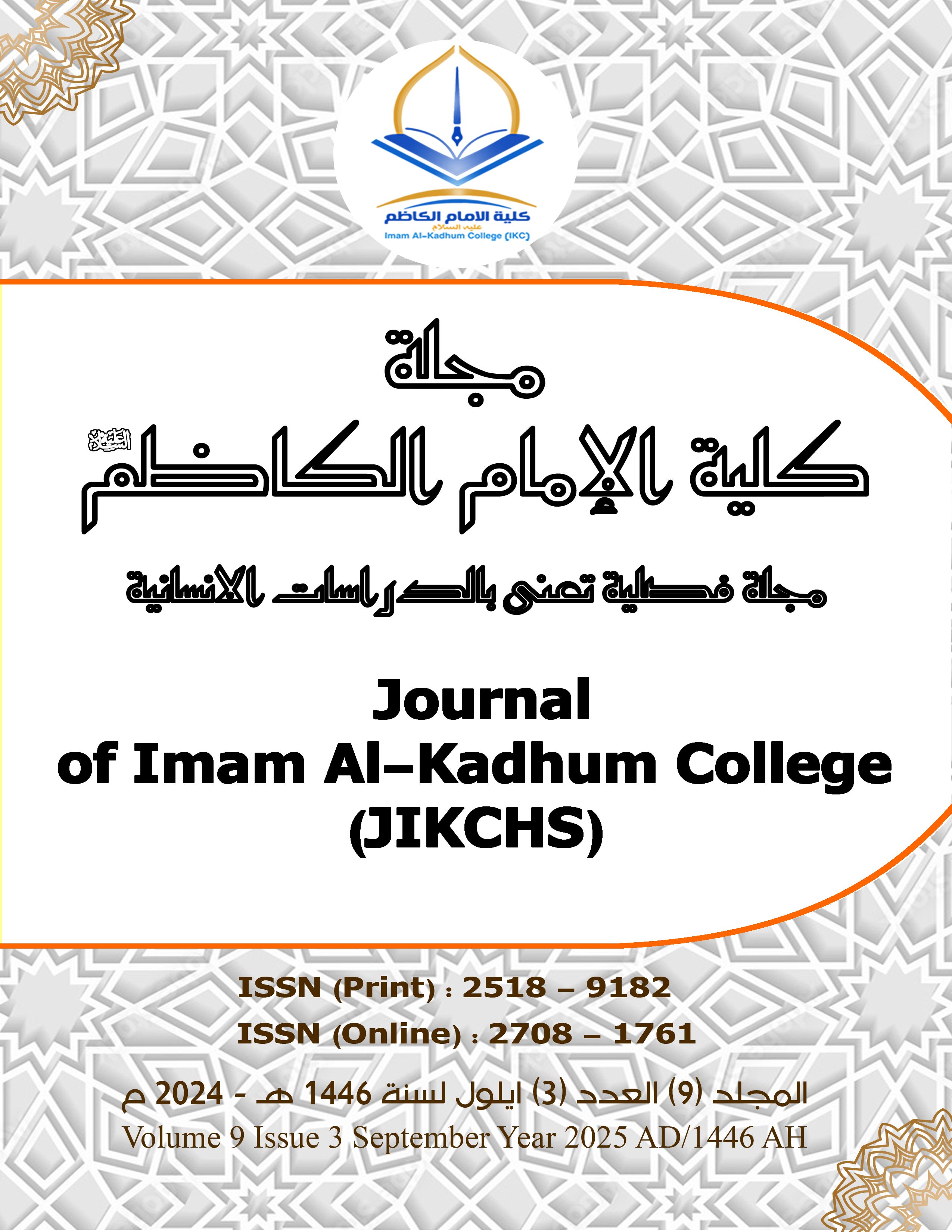Abstract
The research represents an important aspect of the Qur’anic study that researchers should pay attention to, by focusing on the structures of words and their use in the Holy Qur’an, with the aim of revealing the relationships linking the Qur’anic meaning and the linguistic structure, and revealing the semantic differences between the Qur’anic formula and the formula interpreted by it, which leads to reading the text within the limits of its realized formal structure, far from the sayings of deviation, assumption, and arbitrariness in guidance. The research concluded by saying that the assumed interpretive morphological formula is not suitable to replace the chosen Qur’anic formula, and is unable to accurately convey the meaning it conveys, since each morphological formula has its own significance, and the Qur’an employed its structures according to their various values and arranged in a unique stylistic manner, representing the highest levels of rhetorical sublimity.
Keywords
interpretation
Keywords : morphological formula
morphological meaning
Quranic expression
Abstract
يمثّل البحث جانبًا مهمَّا من جوانب الدرس القرآنيّ الذي ينبغي للباحثين أن يلتفتوا إليه، وذلك بالتركيز على أبنيّة الألفاظ وتوظيفها في القرآن الكريم بغية إظهار العلائق الرابطة بين المعنى القرآنيّ والبناء اللغويّ، والكشف عن الفروق الدلاليّة بين الصيغة القرآنيّة والصيغة المفسّرة بها، ممّا يقود إلى قراءة النصّ في حدود بنيته الشكليّة المتحققة بعيدًا عن مقولات العدول والافتراض والتعسّف في التوجيه، وانتهى البحث إلى القول بأنّ الصيغة الصرفيّة التفسيريّة المفترضة لا تصلح لأنْ تحلّ محلّ الصيغة القرآنيّة المختارة، وتعجز عن أداء المعنى الذي تؤدّيه بدّقة، ذلك أنَّ لكلّ صيغة صرفيّة دلالةً خاصّةً بها، وأنَّ القرآن وظّفت مبانيه على مختلف قيمها ورصفت على نحو أسلوبي فريد، مثّل أعلى مراتب السمو البيانيّ.
Keywords
الكلمات المفتاحية : الصيغة الصرفية، التعبير القرآني، تفسير، دلالة صرفية"
